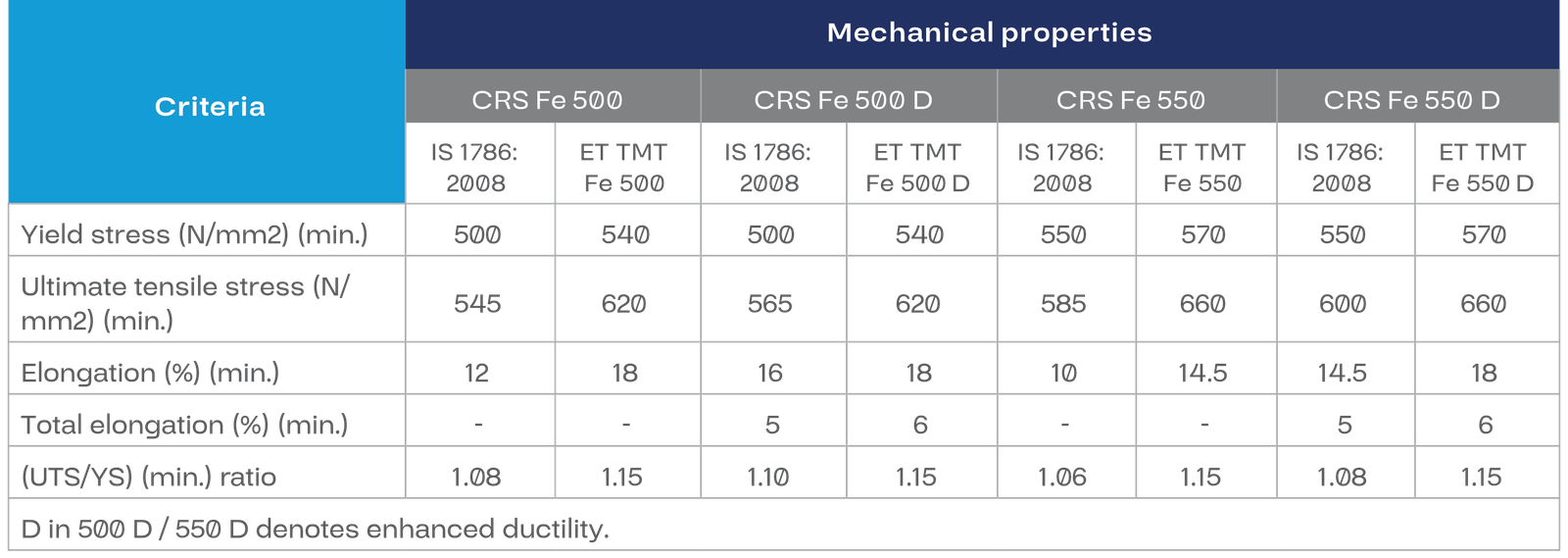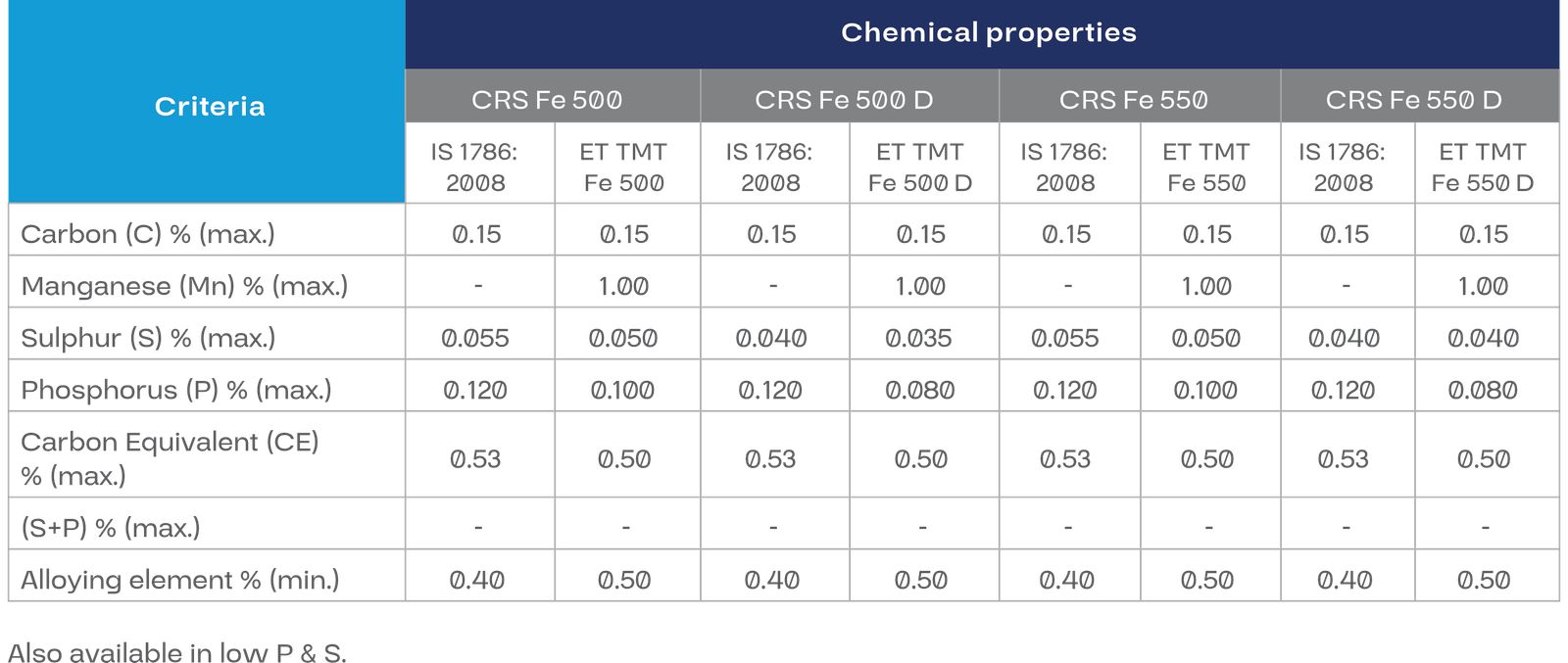ET CRS TMT
BARS
ET CRS TMT Bars are corrosion-resistant, high-yield strength, ductile
and bendable bars made from high-quality sponge iron and copper,
chromium & phosphorous vanadium additives.
Widely trusted for reliability in reinforced concrete structure, these bars
deliver durable structures to meet industry standards of quality and
longevity.
and bendable bars made from high-quality sponge iron and copper,
chromium & phosphorous vanadium additives.
Widely trusted for reliability in reinforced concrete structure, these bars
deliver durable structures to meet industry standards of quality and
longevity.
ET CRS TMT Bars are corrosion-resistant, high-yield strength, ductile and bendable bars made from
high-quality sponge iron and copper, chromium
& phosphorous vanadium additives.
Widely trusted for reliability in reinforced concrete structure, these bars deliver durable structures to meet industry standards of quality and longevity.
Widely trusted for reliability in reinforced concrete structure, these bars deliver durable structures to meet industry standards of quality and longevity.
Available Grades
CRS Fe 500
CRS Fe 500 D
CRS Fe 550
CRS Fe 550 D
CRS Fe 600
Advantages

High-quality sponge iron ensures high-quality CRS
(Corrosion-resistant steel).
(Corrosion-resistant steel).
High-quality sponge iron ensures high-quality CRS (Corrosion-resistant steel).

Copper, chromium & phosphorous vanadium additives
enhance corrosion resistance.
Copper, chromium & phosphorous vanadium additives enhance corrosion resistance.
Superior pitting corrosion resistance ensures a
long life for structures.
Superior pitting corrosion resistance ensures a long life for structures.

High ductility enables steel to undergo permanent
changes without rupturing.
High ductility enables steel to undergo permanent changes without rupturing.

Superior bendability.
Superior bendability.
ET CRS TMT BARS
Properties


Have Questions? Call us Now
Sales: +91 8238079223
Need Support? Write to us
salestmt@electrotherm.com




